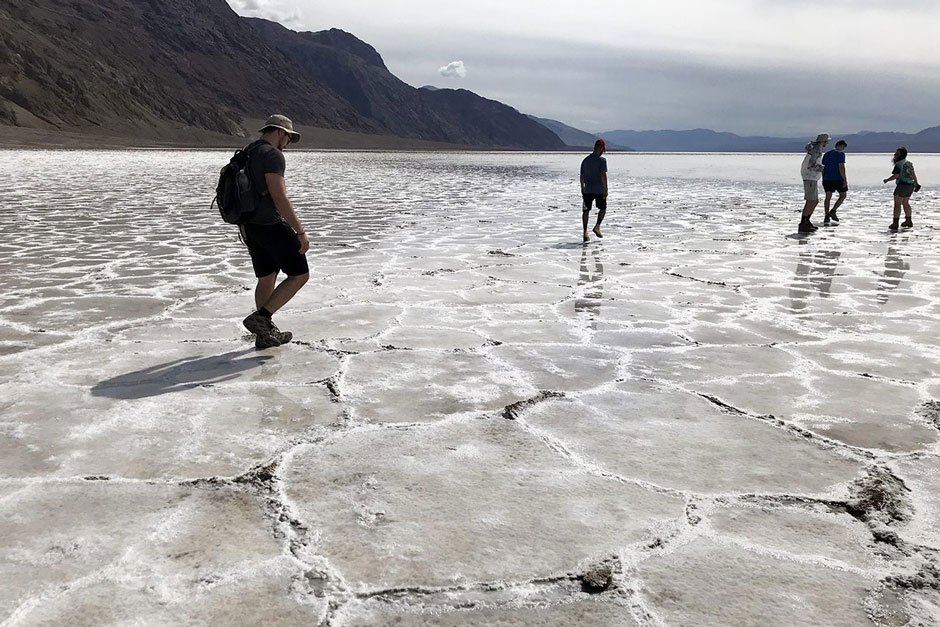- Apply
- Visit
- Request Info
- Give



Published on March 28, 2019

A group of Eastern students recently returned from the American Southwest after studying desert ecology in a global field course (GFC) with the biology department. The trip took place from March 9–17 and was supervised by Professors Brett Mattingly and Matthew Graham.

The course was an introduction to the study of desert ecology and biogeography. In the Mojave and Sonoran desert systems, students examined how environmental factors and biotic interactions shape the diversity and distribution of arid-adapted plant and animal communities from local to ecoregional scales. They evaluated how these communities are assembled over ecological and geological timescales.
Students executed plant surveys and set up arachnid traps under various light treatments. Four different species of scorpions and a camel spider were collected for analysis, as Graham is in the process of studying camel spiders with a major grant from the National Science Foundation.
Weather conditions such as wind, rain, snow and sand storms impacted data gathering. “The weather was a lot colder than we expected, so we saw less reptiles and invertebrates than other classes, unfortunately,” said Margalit Kaufman ‘19. “The plant life was plentiful, however, so we were still able to do research on biodiversity, especially that of vegetation.”
Though they were not able to collect many camel spiders for analysis, Alexsis Powell ‘20 noted that the trip was not any less hands-on. “It was still fun learning how to set up the traps,” she added. “At first, I was upset that I would not get the traditional ‘desert experience,’ but as the week went on, I was grateful that it was not extremely hot, because that would have made the long hikes more difficult.”
Ashley Dupuis ’19 continued: “The environment exposed me to a set of community diversity in which I was not accustomed to.” The students utilized an online platform called iNaturalist, which is a social network composed of naturalists, citizen scientists and biologists that shares and maps observations of biodiversity across the globe.

The most memorable part of the GFC for Powell was searching for scorpions. “It was awesome being able to see animals that you can’t find here in Connecticut.” The trip made her realize how much she enjoys doing fieldwork.
Kaufman and Dupuis cited visiting Death Valley in Eastern California as their favorite part of the trip, appreciating the ecosystem and natural beauty they encountered. Moreover, Dupuis valued spending time disconnected from “artificial” human reality.
“Packing up your house and carrying it on your back every day is a surreal feeling,” she said. “I gained peace of mind on this trip that solidified my feelings to become a field biologist, no matter how competitive.” She is considering graduate school for the future and wants to continue doing desert research out West.
Kaufman also plans to attend graduate school, in pursuit of evolutionary biology. “This course will have been helpful in terms of understanding comparative anatomy and ecology, evolutionary adaptations in desert species and paleontology.”
The GFC programs at Eastern serve a growing population of students and aim to reinforce a global and liberal arts focus to professional preparation.
“I believe the field experience I gained will help me stand out and convince someone to take a chance on me, leading me toward a successful career,” concluded Dupuis.
Written by Jordan Corey